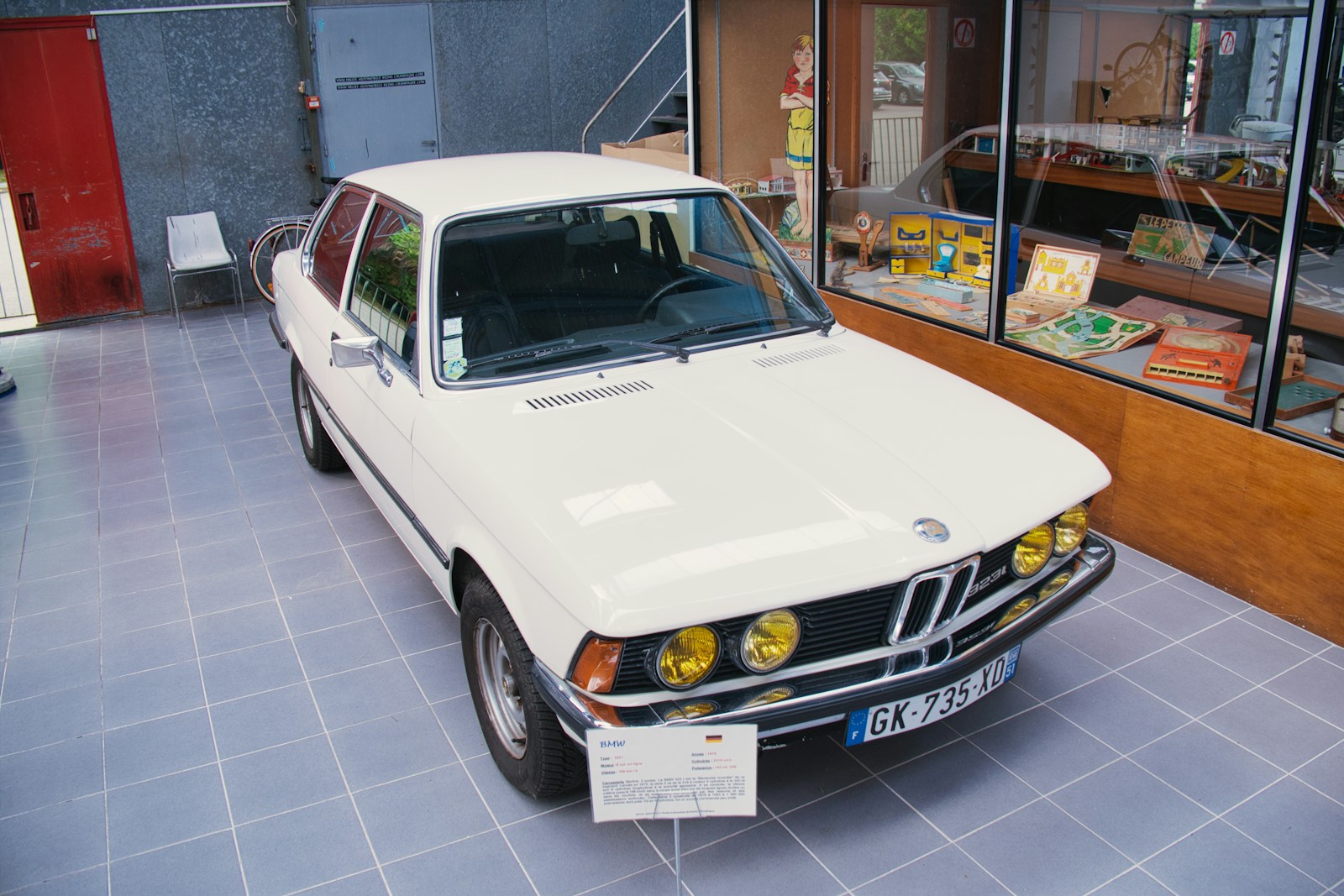
Rev up your curiosity as we steer through the fascinating stories of trailblazing automakers that once turned heads but ultimately disappeared from the road. Once upon a time, American roads were filled with the bold dreams of automakers whose names have since faded into obscurity. These car brands didn’t just build vehicles—they pushed boundaries, introduced revolutionary features, and dared to challenge the status quo, making them an integral part of the American landscape.
Yet, despite their innovative spirit and significant presence, many ultimately disappeared, leaving behind stories of ambition, ingenuity, and what could have been. The automotive industry, a constantly evolving beast, has always demanded adaptability, and those who couldn’t keep pace, for a myriad of reasons, found their journey ending on a historical roadside. From the grand luxury marques that once symbolized opulence to the everyday workhorses that served generations, their tales are filled with lessons.
Today, we’re embarking on a journey to uncover the hidden histories of some truly remarkable American car brands that vanished, despite their ingenuity. Each one had a time when it mattered, holding a meaningful place in the market and capturing the imagination of drivers across the country. We’ll delve into the compelling factors that led to their demise, offering a peek behind the curtain of an ever-changing industry. Let’s explore the pioneering spirits and the challenges they faced that ultimately led them to drive into the sunset.
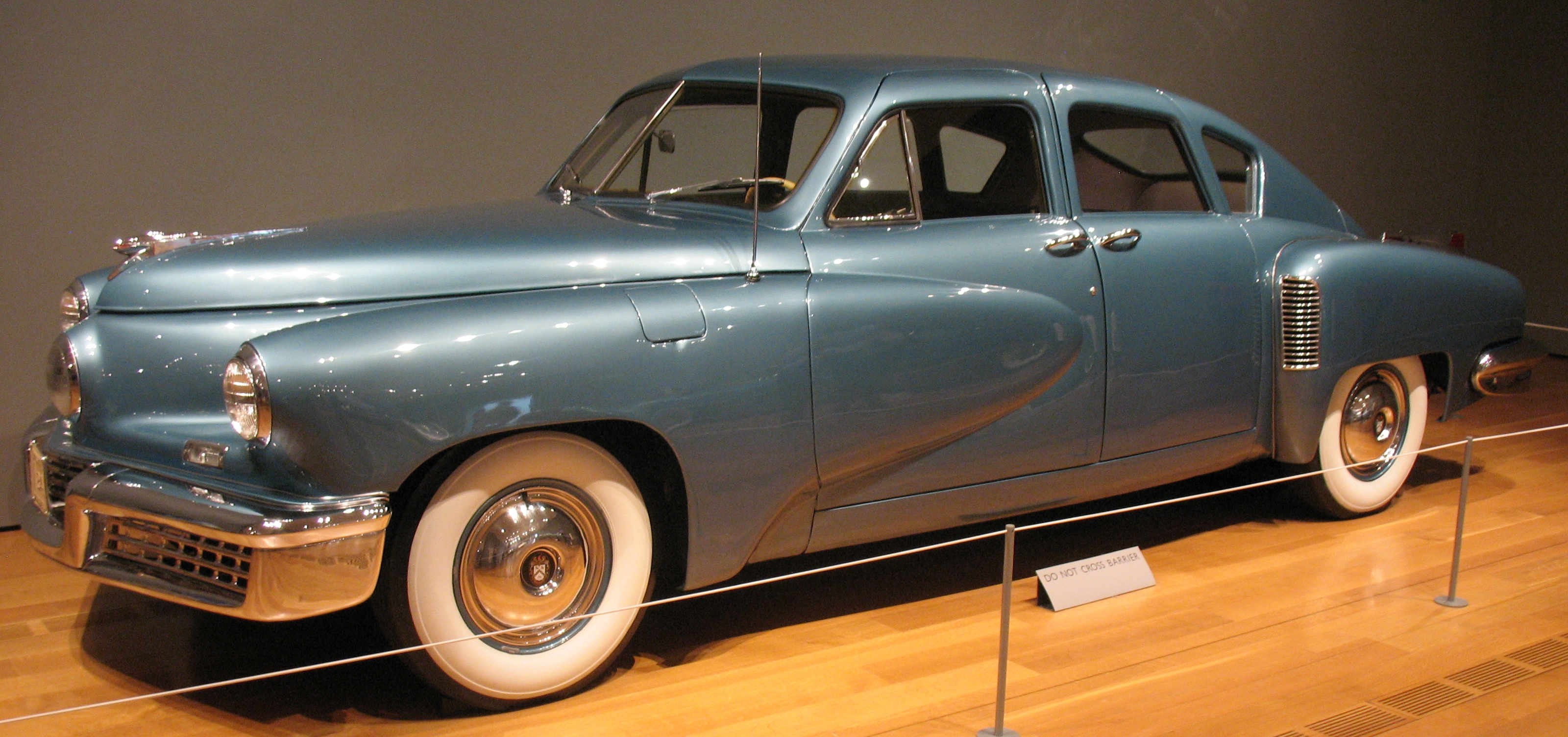
1. **Tucker: The Car That Was Years Ahead of Its Time**Imagine a car so revolutionary that it seemed plucked from the future, an automotive marvel designed to redefine safety and performance. That, dear reader, was the Tucker 48, also famously known as the Tucker Torpedo. In the late 1940s, this visionary vehicle captivated the automotive world with features that were, quite frankly, decades ahead of their time, leaving both enthusiasts and skeptics in awe of its daring.
According to Smithsonian Magazine, this wasn’t just another car; it was a statement. The Tucker 48 boasted a rear-mounted engine, a design choice that redistributed weight for better handling, and a perimeter frame engineered for superior crash protection, a concept now commonplace in modern vehicles. But perhaps its most eye-catching innovation was the third “cyclops” headlight, an adaptive illumination system that pivoted with the steering wheel, peering around corners before the driver even fully turned.
Preston Tucker, the visionary behind this automotive dream, had a singular mission: to create the safest and most advanced car of its day. His radical ideas, however, quickly attracted not only a passionate fanbase but also considerable friction. The established Detroit automakers, entrenched in their traditional ways, viewed Tucker’s groundbreaking approach with a mix of suspicion and perhaps a dash of fear, sensing a potential disruption to their long-held dominance.
These clashes were not without consequence. Tucker’s audacious innovations put him directly at odds with the industry giants, leading to a complex web of political and financial challenges. The pressures proved immense, and despite its groundbreaking design and immense promise, the Tucker company was ultimately brought down after only 51 cars were produced. A stark reminder that sometimes, being too far ahead of the curve can be a perilous path.
Yet, the Tucker brand, though tragically short-lived, has transcended its commercial fate to become an enduring icon of American automotive ambition and daring innovation. Its legacy lives on, celebrated by collectors and historians as a testament to what could have been, a shining example of a bold idea that dared to challenge the status quo and forever changed perceptions of what a car could be.
Read more about: I Miss These: 15 Iconic American Car Brands That Vanished From Our Roads

2. **Cord: Art Deco Innovation on Wheels**Step back into the glamorous 1930s, a time when design was king, and you’ll find Cord, an automaker that didn’t just build cars, but works of art on wheels. Cord made an indelible mark with its striking Art Deco aesthetics, which were instantly recognizable and incredibly stylish. These weren’t just vehicles; they were rolling sculptures, exuding sophistication and forward-thinking design that turned heads wherever they went, making a powerful visual statement.
But Cord’s brilliance wasn’t confined to its stunning appearance. Beneath that elegant exterior lay a trove of cutting-edge technology that was truly revolutionary for its era. The brand pioneered features such as front-wheel drive and retractable headlights in its iconic 810 and 812 models, as noted by Hagerty. Imagine, headlights that disappeared seamlessly into the fenders when not in use—a touch of magic that perfectly complemented the car’s sleek lines.
These vehicles stood out in the 1930s not just for their breathtaking looks, but equally for their advanced engineering. While other manufacturers were still grappling with conventional designs, Cord was boldly pushing boundaries, offering a glimpse into the future of automotive technology and styling. Their commitment to innovation and beauty earned them a special place in the hearts of automotive enthusiasts and historians alike, truly setting them apart from the crowd.
Despite their undeniable innovation and visual captivating presence, Cord’s journey was unfortunately cut short. The turbulent economic pressures of the Great Depression, combined with persistent financial troubles, proved to be an insurmountable hurdle. The brand, a beacon of design and engineering, ultimately succumbed to these forces, leading to its demise in 1937, a sad end for such a visionary company.
Today, Cord is rightfully celebrated as one of the most innovative and visually captivating brands of its time. Its cars are revered by collectors, admired for their timeless beauty and their audacious engineering. The legacy of Cord reminds us that while innovation can create masterpieces, sometimes the economic tides of history are simply too powerful to overcome, leaving behind a cherished memory of automotive artistry.
Read more about: I Miss These: 15 Iconic American Car Brands That Vanished From Our Roads
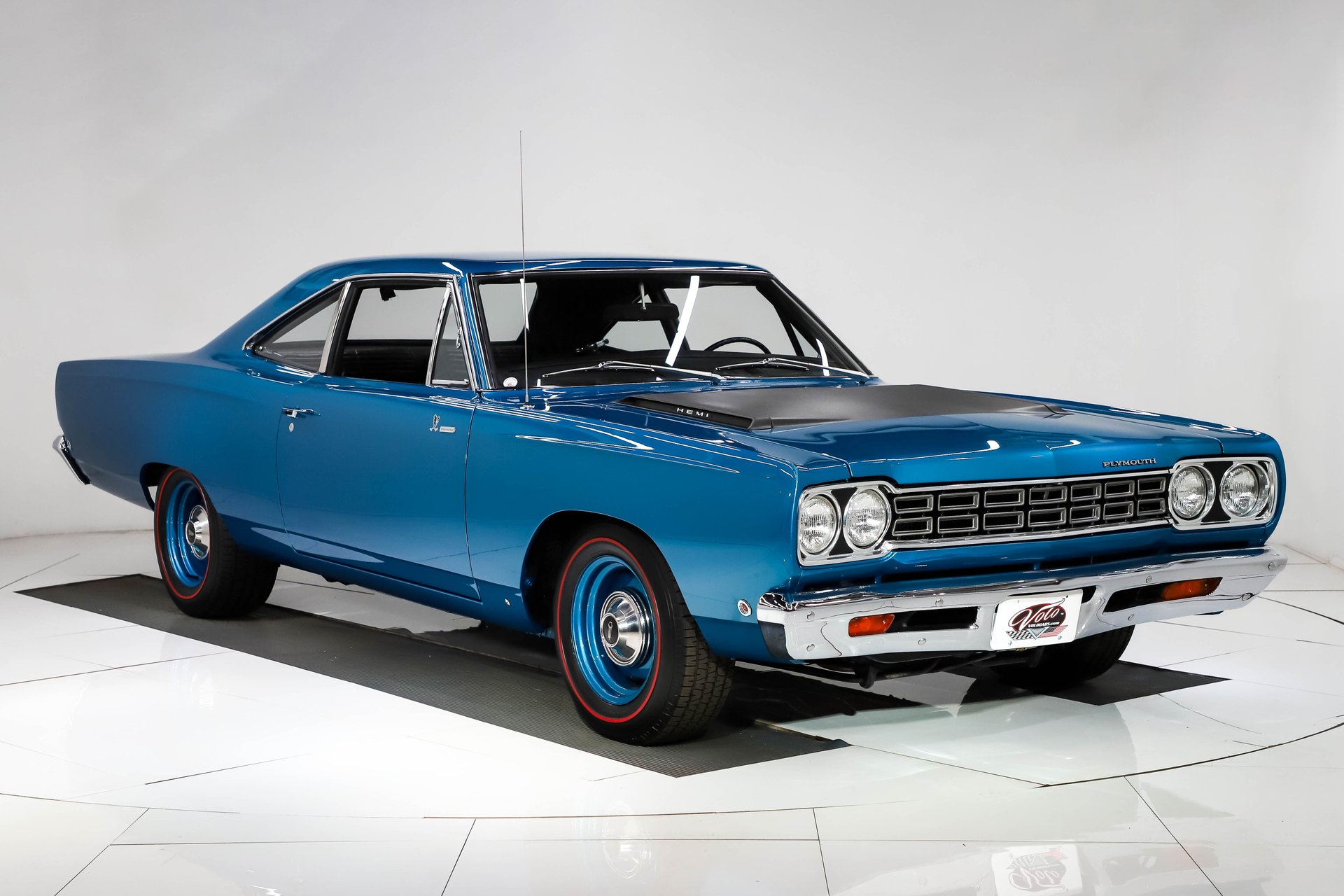
3. **Plymouth: The Everyman’s Innovator**Plymouth, a name that once resonated deeply with American families, arrived on the scene in 1928, courtesy of Chrysler. The brand was introduced with a clear mission: to offer value-oriented cars that were packed with features typically found in pricier models, making quality and innovation accessible to the average American driver. It quickly carved out a niche as a reliable, American-made choice, well within reach for those seeking practicality without feeling stripped down.
Plymouth was more than just an affordable option; it was also a quiet innovator. The brand was a pioneer in making hydraulic brakes widely available, a significant safety advancement that improved stopping power and control for countless drivers. Later, it continued its forward-thinking approach by introducing the Barracuda, a sleek and powerful machine that became a forerunner of the muscle car movement, as detailed by Mac’s Motor City Garage, cementing its place in automotive history.
For decades, Plymouth held a clear and steady place on American roads, often seen as a smart and dependable choice. It made sense to a lot of people, providing solid transportation and a sense of progress without the need for a luxury badge. Its models were visible in suburbs and cities alike, supported by a strong sense of familiarity and robust dealership networks, truly becoming part of the American landscape.
However, as time wore on, Plymouth’s identity began to unfortunately muddle within Chrysler’s expanding portfolio. The brand started offering models that looked too similar to those sold by its sister brands, leading to an erosion of its unique appeal. Without a strong, distinct reason to stand out in an increasingly crowded market, interest in Plymouth cooled, and its market share steadily eroded.
By 2001, the inevitable decision was made. Plymouth was quietly phased out, becoming a victim of market overlap and shifting automotive trends. Its disappearance was not a dramatic collapse but rather a quiet retreat, with many drivers barely noticing the change. By the time it disappeared, many had already moved on, leaving Plymouth as a memory of a brand that served its purpose well during the years it mattered, but ultimately lost its way.
Read more about: I Miss These: 15 Iconic American Car Brands That Vanished From Our Roads
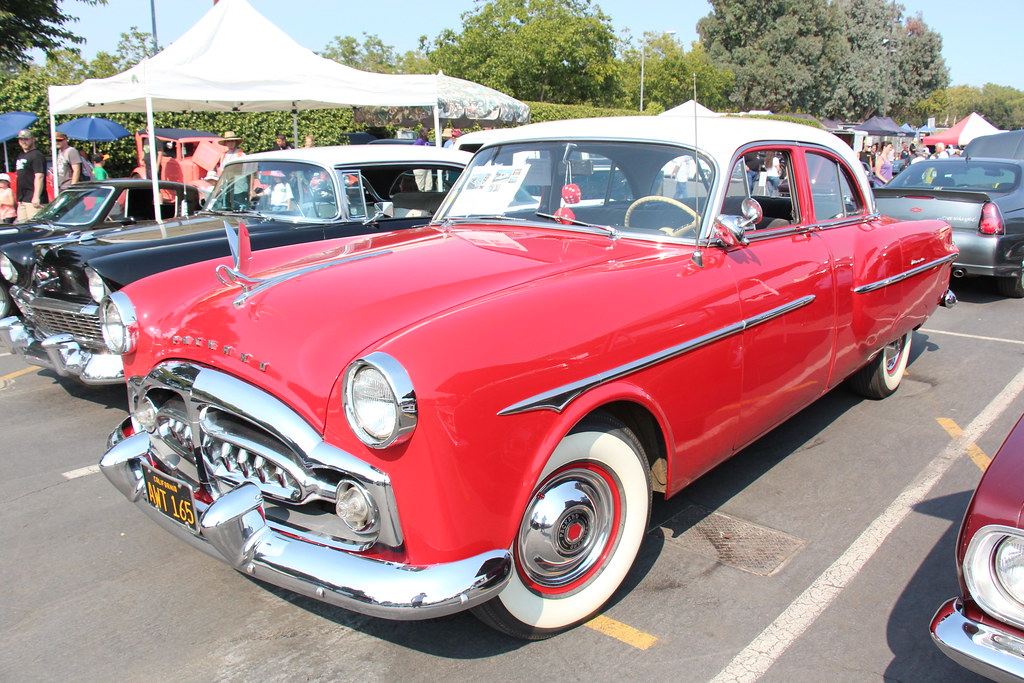
4. **Packard: Luxury and Innovation in Every Detail**In the grand tapestry of American automotive history, Packard emerged as a true titan of luxury, setting itself apart with an unwavering commitment to engineering achievements and technological advancements. It wasn’t just a car; it was a statement, a symbol of refined taste and superior craftsmanship, catering to America’s elite and defining what luxury meant in the early 20th century.
The company wasn’t content with just elegance; it pushed the boundaries of automotive technology. Packard introduced groundbreaking firsts that raised the bar for comfort and performance across the industry. Imagine being among the first to experience production air conditioning in your vehicle, a true marvel of convenience in its time. And then there was the Ultramatic automatic transmission, an engineering feat that made driving smoother and more sophisticated, showcasing Packard’s relentless pursuit of excellence.
Despite these monumental milestones and a sterling reputation, Packard’s fortunes took a downturn after World War II. The post-war automotive landscape was changing rapidly, and Packard struggled mightily to compete with the rising dominance of Cadillac and Lincoln, as recalled by Ate Up With Motor. The market for ultra-luxury was contracting, and intense competition from larger, more nimble players began to chip away at Packard’s once unassailable position.
A troubled merger with Studebaker, intended as a lifeline, unfortunately failed to rescue the brand from its deepening financial woes. This desperate attempt to combine forces couldn’t reverse the tide of declining sales and mounting challenges. The economic downturn of the 1930s had already taken its toll, and the subsequent post-war struggles proved to be too much for even such a storied marque to overcome.
By 1958, the proud name of Packard exited the automotive scene, leaving behind a rich and storied heritage of elegance, innovation, and unparalleled quality. Its vehicles are still revered by collectors, remembered for their meticulous craftsmanship and pioneering spirit, serving as a poignant reminder that even the most prestigious brands can fall victim to changing times and economic realities.
Car Model Information: 1951 Packard 300
Name: Hewlett-Packard Company
Logo: Hewlett-Packard logo 1979 blue.svg
LogoSize: 275
LogoCaption: Logo used from 1979 to 2010
Type: Public company
TradedAs: {{NYSE was,HWP
Industry: Computer hardware,Software,IT service management,Information technology consulting
Fate: HP Inc.
Successors: HP Inc. (legal successor),Hewlett Packard Enterprise,DXC Technology,Micro Focus,Agilent Technologies
Foundation: [object Object]
Founders: Bill Hewlett,David Packard
Defunct: [object Object]
LocationCity: Palo Alto, California,California,Coord
AreaServed: Worldwide
Products: List of Hewlett-Packard products
Subsid: List of acquisitions by Hewlett-Packard
LocationCountry: U.S.
Homepage: https://www.hp.com/us-en/hp-information.html|hp.com
Categories: 1939 establishments in California, 2015 disestablishments in California, All Wikipedia articles written in American English, All articles containing potentially dated statements, All articles lacking reliable references
Summary: The Hewlett-Packard Company, commonly shortened to Hewlett-Packard ( HEW-lit PAK-ərd) or HP, was an American multinational information technology company. It was founded by Bill Hewlett and David Packard in 1939 in a one-car garage in Palo Alto, California. Growing to become an influential high-tech powerhouse at the heart of Silicon Valley, the company was known for its progressive business philosophy known as the HP Way. HP developed and provided a wide variety of hardware components, as well as software and related services, to consumers, small and medium-sized businesses (SMBs), and fairly large companies, including customers in government sectors. At its peak in 2011, HP employed 350,000 people around the globe. The company officially split into Hewlett Packard Enterprise and HP Inc. in 2015.
HP initially produced a line of electronic test and measurement equipment. It won its first big contract in 1938 to provide the HP 200B, a variation of its first product, the HP 200A low-distortion frequency oscillator, for Walt Disney’s production of the 1940 animated film Fantasia, which allowed Hewlett and Packard to formally establish the Hewlett-Packard Company on July 2, 1939. The company grew into a multinational corporation widely respected for its products. HP was the world’s leading PC manufacturer from 2007 until the second quarter of 2013 when Lenovo moved ahead of HP. HP specialized in developing and manufacturing computing, data storage, and networking hardware, designing software, and delivering services. Major product lines included personal computing devices, enterprise and industry standard servers, related storage devices, networking products, software, and a range of printers and other imaging products. The company directly marketed its products to households, small- to medium-sized businesses, and enterprises, as well as via online distribution, consumer-electronics, and office-supply retailers, software partners, and major technology vendors. It also offered services and a consulting business for its products and partner products.
In 1999, HP spun off its electronic and bio-analytical test and measurement instruments business into Agilent Technologies; HP retained focus on its later products, including computers and printers. It merged with Compaq in 2002 in what was then a major deal within the industry. They made numerous other acquisitions including Electronic Data Systems in 2008, which led to combined revenues of $118.4 billion that year and a Fortune 500 ranking of 9 in 2009, and later 3Com, Palm, Inc., and 3PAR, all in 2010, followed by Autonomy Corp. However, as a result of the turmoil created by several of these acquisitions, the company’s fortunes swiftly declined in the 2010s. This led to Hewlett-Packard Company’s split into two separate companies on November 1, 2015: its enterprise products and services business were spun-off to form Hewlett Packard Enterprise, while its personal computer and printer businesses became HP Inc. The split was structured so that the former Hewlett-Packard Company would change its name to HP Inc. and spin off Hewlett Packard Enterprise as a newly created company. HP Inc. retained the old Hewlett-Packard’s stock-price history and original NYSE ticker symbol; Hewlett Packard Enterprise trades under its own ticker symbol: HPE.
Get more information about: Hewlett-Packard
Buying a high-performing used car >>>
Brand: Packard Model: Packard
Price: $19,950 Mileage: 80,168 mi.
Read more about: I Miss These: 15 Iconic American Car Brands That Vanished From Our Roads
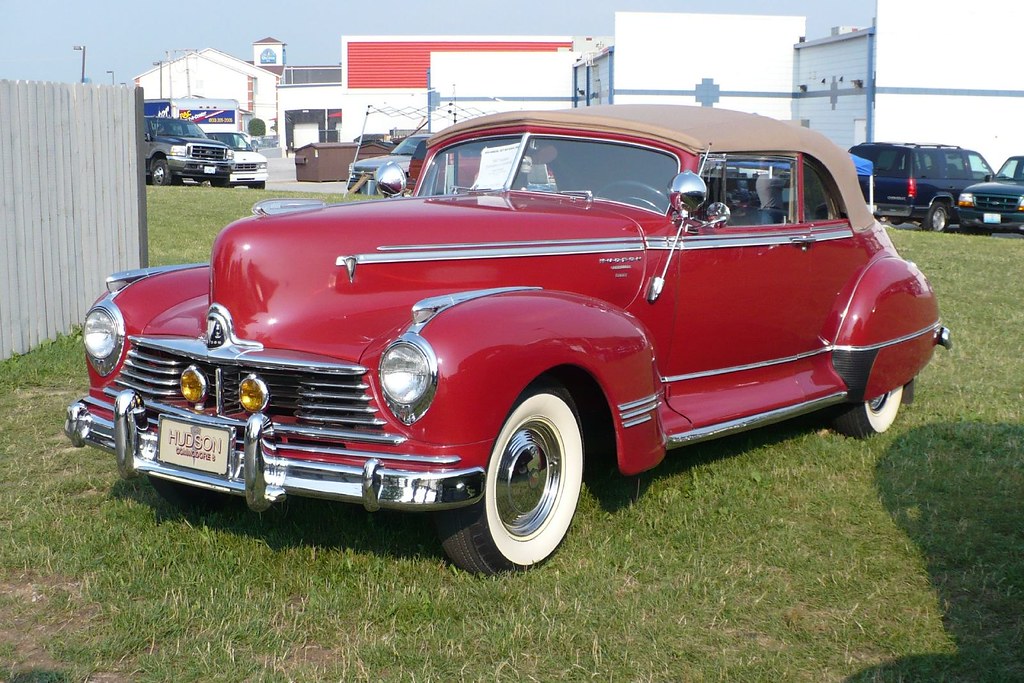
5. **Hudson: Racing into the Future**Hudson, a name that evokes images of speed and groundbreaking design, established its formidable reputation with the introduction of its iconic “step-down” design in the 1948 Commodore. This revolutionary engineering feat wasn’t just about aesthetics; it significantly improved both handling and safety by lowering the car’s center of gravity, creating a vehicle that was both stylish and incredibly stable on the road, as explained by Wikipedia.
But Hudson’s innovation wasn’t confined to its engineering bay. The brand found immense fame and glory on the racetrack, dominating NASCAR in the early 1950s with its legendary Hornet model. The “Fabulous Hudson Hornet” became a household name, showcasing the brand’s raw power and superior performance, captivating racing fans and solidifying Hudson’s image as a force to be reckoned with in the automotive world. These triumphs created an emotional connection with buyers that few brands could match.
Even with its undeniable engineering strengths and a celebrated presence in motorsports, Hudson couldn’t escape the inexorable forces of industry consolidation. The mid-1950s saw a rapid shift in the American automotive landscape, with larger manufacturers swallowing up smaller ones in a bid for market dominance. Hudson, despite its loyal following and innovative spirit, found itself struggling to keep pace with the resources of its colossal rivals.
The inevitable occurred when Hudson merged with Nash-Kelvinator in 1954 to form American Motors Corporation (AMC). This strategic move was an attempt to create a stronger entity capable of competing in an increasingly competitive market. However, despite the merger, the distinct Hudson name ultimately disappeared by 1957, fading into the larger corporate identity.
Though the Hudson badge vanished from new cars, its legacy in racing and design innovation remains firmly intact. Its groundbreaking “step-down” design influenced future automotive engineering, and its racetrack heroics continue to inspire. Hudson stands as a testament to ingenuity and competitive spirit, a brand that, though no longer in production, carved out an unforgettable chapter in American automotive history, proving that even a powerful engine can’t always outrun market forces.
Car Model Information: 1947 Hudson Commodore
Layout: Front-engine, rear-wheel drive layout
Manufacturer: Hudson Motor Car Company
Production: 1941–1942,1946–1952
Class: Full-size car
Caption: 1947 Hudson Commodore Convertible Brougham
Assembly: Detroit
Predecessor: Hudson Greater Eight
Categories: 1940s cars, 1950s cars, All articles needing additional references, Articles needing additional references from March 2021, Articles with short description
Summary: The Hudson Commodore is an automobile that was produced by the Hudson Motor Car Company of Detroit, Michigan between 1941 and 1952. During its time in production, the Commodore was the largest and most luxurious Hudson model.
Get more information about: Hudson Commodore
Buying a high-performing used car >>>
Brand: Hudson Model: Commodore
Price: $46,900 Mileage: 58,325 mi.
Read more about: I Miss These: 15 Iconic American Car Brands That Vanished From Our Roads
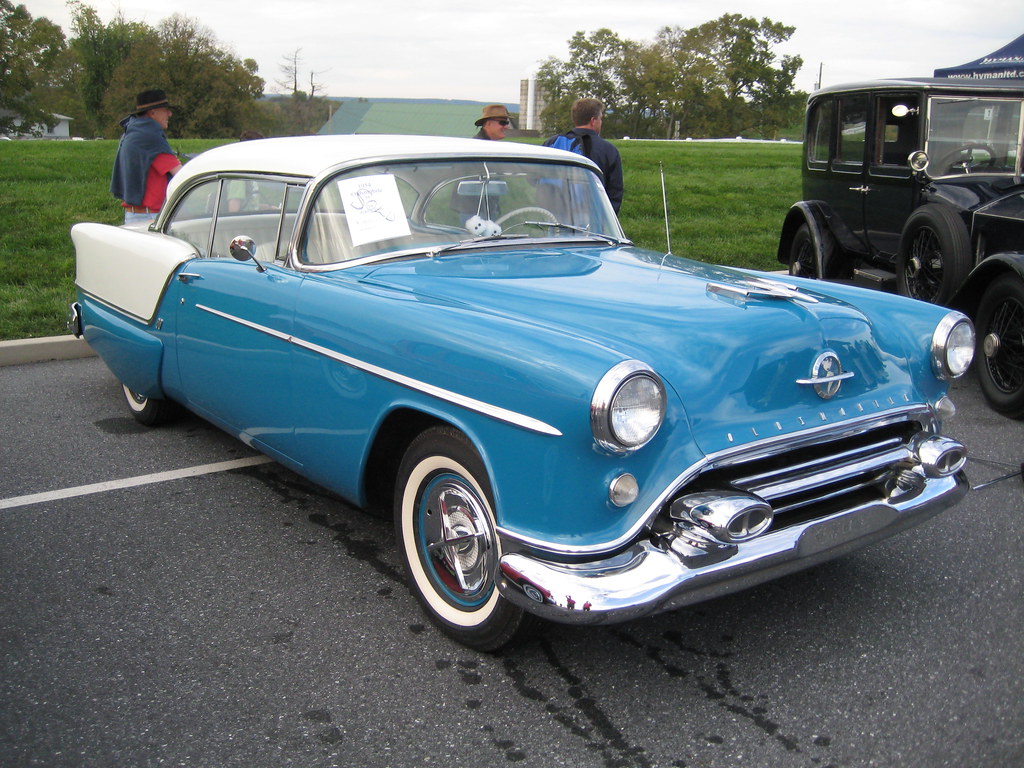
6. **Oldsmobile: The Pioneer of the Automatic Transmission**Oldsmobile, a name synonymous with longevity and innovation, was a true trailblazer among American carmakers, tracing its roots all the way back to 1897. Founded by Ransom E. Olds, it holds the distinction of being one of the oldest car manufacturers in the world and was a driving force behind several pivotal automotive breakthroughs, consistently pushing the boundaries of what was possible in vehicle technology.
The brand’s innovative spirit was evident in its pioneering achievements. According to Story Cars, Oldsmobile was responsible for introducing the automatic transmission, a game-changing feature that revolutionized driving and quickly became an industry staple. It also unveiled the powerful “Rocket” V8 engine, which cemented its reputation for performance. Furthermore, its Toronado model broke new ground as one of the first American cars to feature front-wheel drive, showcasing a commitment to advanced engineering.
For much of its long history, Oldsmobile represented progress, a refined choice that many aspired to. It symbolized steady work and a sign of moving forward, sitting comfortably in the lives of people who wanted something sophisticated without necessarily reaching for a luxury badge. Its models were known for reliability and innovation, appealing to a wide range of buyers, from everyday drivers to those seeking a touch of class.
However, despite its impressive innovative legacy, Oldsmobile began to struggle to keep up with rapidly changing consumer tastes and General Motors’ evolving corporate priorities. As time went on, the brand’s image started to become somewhat outdated, finding it difficult to attract younger buyers. GM’s decision to standardize designs across its various brands further hurt Oldsmobile’s uniqueness, blurring its identity in an already crowded market.
Declining sales and an aging customer base ultimately led to General Motors’ difficult decision to discontinue Oldsmobile in 2004. This closure marked the end of an era for a brand that had helped shape automotive history, a quiet kind of respect left behind, but a stark reminder that even the most innovative and long-standing brands must constantly adapt to survive in the ever-shifting currents of the auto industry.
Read more about: I Miss These: 15 Iconic American Car Brands That Vanished From Our Roads
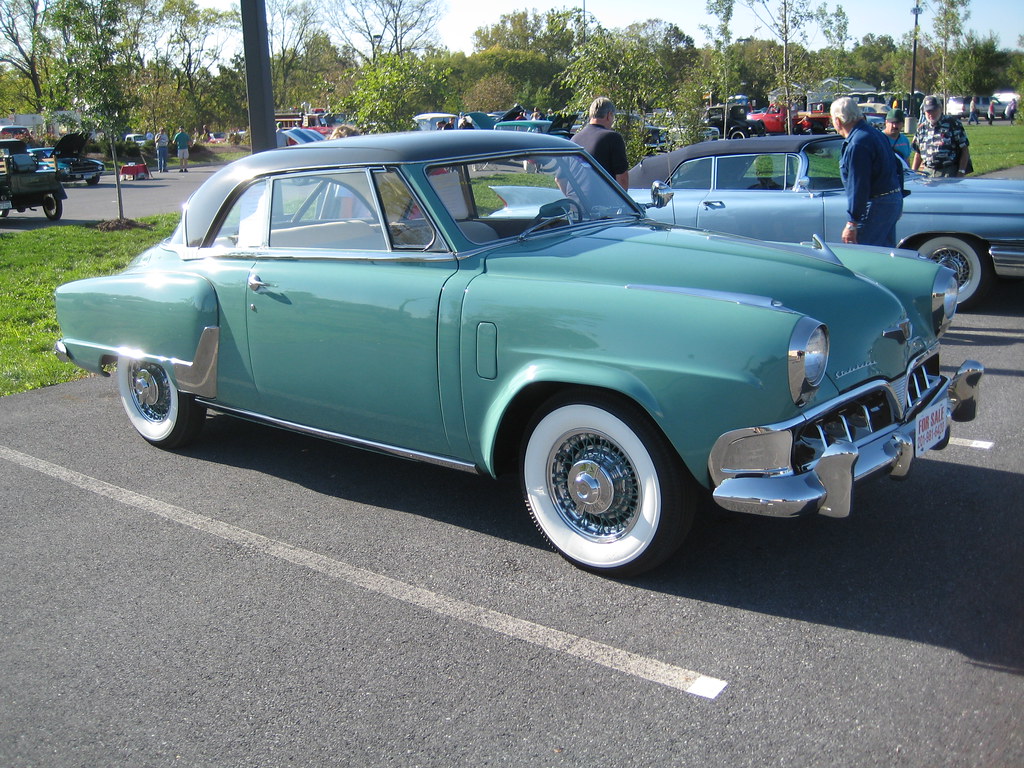
7. **Studebaker: From Wagons to Cutting-Edge Cars**Long before the roar of an engine replaced the clatter of hooves, Studebaker had already made its mark on American life. With roots stretching back to wagon manufacturing in the 19th century, the company built a reputation for steady quality and deep-seated American craftsmanship. Its transition to automobiles in the early 1900s was a natural evolution, bringing that same dedication to a new form of transportation that would redefine the nation.
As it pivoted to car production, Studebaker quickly became known for its distinctive, forward-thinking designs that often defied conventional aesthetics. Models like the iconic bullet-nose Champion, with its aircraft-inspired front end, showcased a bold willingness to experiment. Later, the Avanti, a true marvel of its time, featured groundbreaking fiberglass construction and advanced engineering, as noted by The Detroit Bureau, proving Studebaker was never afraid to push boundaries.
For many years, Studebaker cars were a familiar sight, particularly in small towns and rural roads, often kept for years by the same owners. They embodied dependability and a unique American creativity that resonated deeply with buyers. The brand maintained a strong presence, built on a foundation of trust and a reputation for quality that had been established over a century of manufacturing.
Nevertheless, even a brand with such a storied history and innovative spirit couldn’t withstand the immense pressures of the evolving automotive industry. Studebaker faced persistent financial instability and intense, relentless competition from Detroit’s burgeoning Big Three automakers. These larger players, with their deeper pockets and vast resources, gained ground rapidly, making it increasingly difficult for Studebaker to keep pace.
By the 1960s, mounting losses and a shrinking market share sealed the company’s fate. Studebaker began to slip from conversation, and production eventually ceased, bringing an end to the legacy of a brand that had once defined American creativity and craftsmanship. It was not a sudden collapse, but rather a quiet turning of a page, leaving behind a name that still sparks memory, even if it belongs to a much earlier, cherished chapter of automotive history.
Read more about: I Miss These: 15 Iconic American Car Brands That Vanished From Our Roads
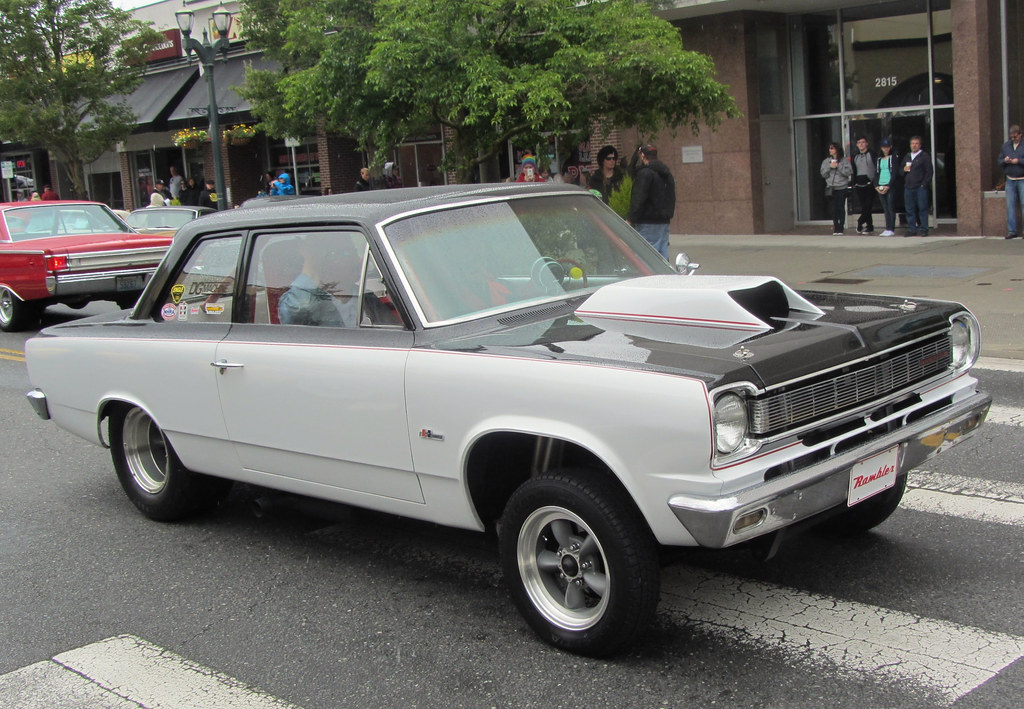
8. **AMC: The Quirky Challenger**If the automotive world had an underdog with a penchant for surprising everyone, it would undoubtedly be American Motors Corporation (AMC). Emerging in 1954, AMC quickly earned a reputation for thinking delightfully outside the box, refusing to play by the conventional rules of Detroit’s automotive giants. They weren’t afraid to take risks, and their vehicles often reflected a refreshing ingenuity that set them apart, earning them a unique place in the hearts of many drivers.
AMC’s approach was a masterclass in creative problem-solving, particularly evident in how they responded to the challenges of their times, including the infamous oil crisis. They brought us the compact and sensible Rambler, a pioneer in the smaller car market, alongside the rugged and indomitable Jeep, which has since become a global icon. But perhaps most famously, AMC dared to introduce genuinely quirky models like the distinctive Gremlin and the incredibly futuristic-looking Pacer, cars that, for better or worse, always sparked conversation and left an impression.
Despite their inventive spirit and undeniable charm, AMC simply couldn’t match the sheer financial muscle and vast resources of its much larger rivals. The automotive industry is, after all, a brutal arena, and even the most creative players can struggle when competing against behemoths with deeper pockets and broader reach. As the market became increasingly competitive, AMC faced insurmountable financial difficulties, signaling that their independent journey was nearing its end.
The brand’s story culminated in 1987 when Chrysler shrewdly acquired AMC. The primary prize, of course, was the incredibly valuable Jeep brand, which has since flourished under new ownership. The AMC name itself eventually faded from the automotive landscape, but its bold and unconventional influence on car design and market strategy continues to inspire, reminding us that sometimes the most memorable ideas come from those who dare to be different.
Read more about: I Miss These: 15 Iconic American Car Brands That Vanished From Our Roads
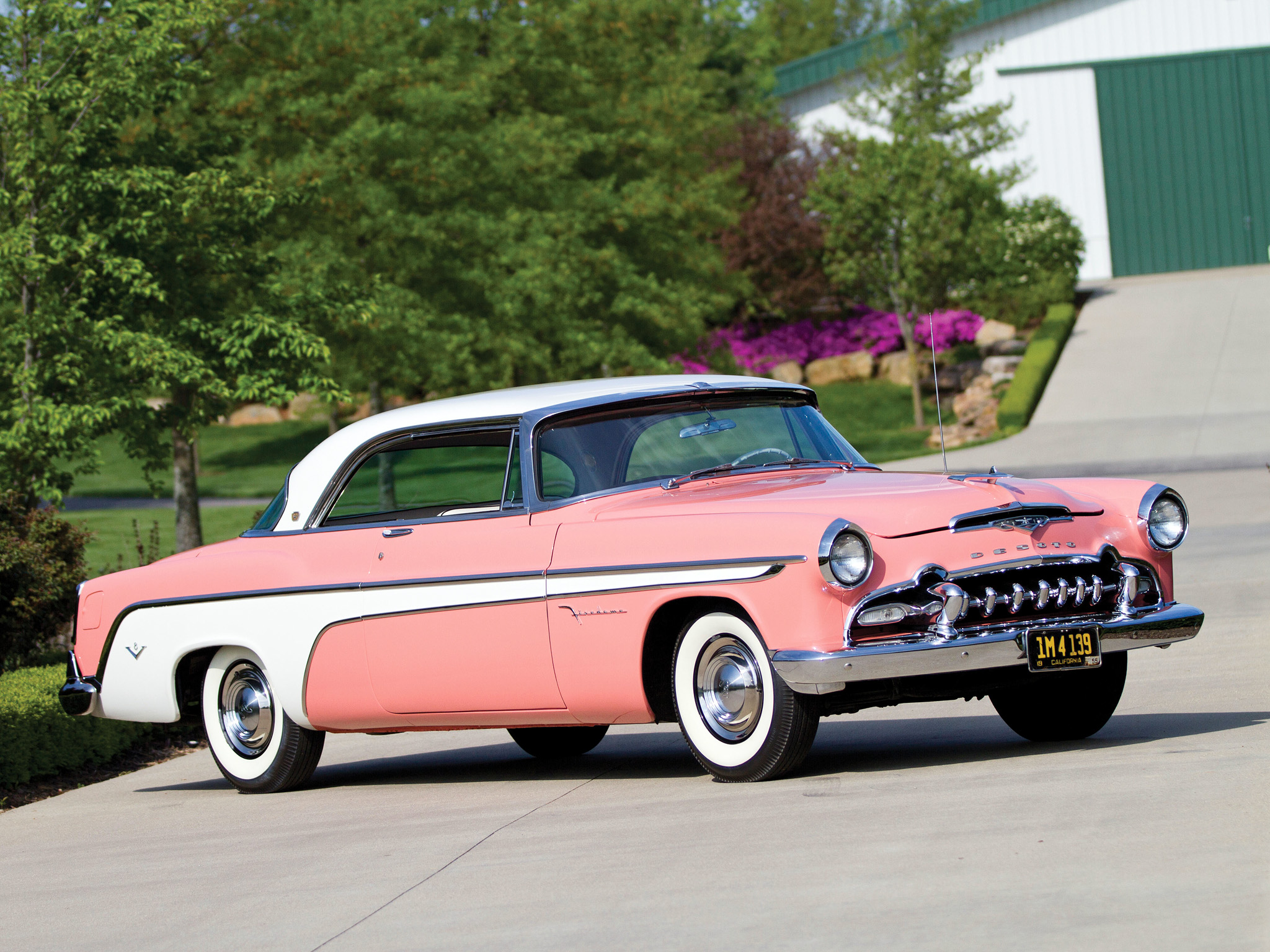
9. **DeSoto: Chrysler’s Forgotten Trailblazer**In 1928, Chrysler unveiled DeSoto, a brand that quickly captured the imagination of the public with its stylish yet affordable vehicles and a strong emphasis on advanced engineering. Positioned to compete with established names like Buick and Oldsmobile, DeSoto carved out a niche for itself, offering a compelling blend of elegance and accessibility that resonated with a broad spectrum of American drivers.
DeSoto wasn’t just about good looks; it was a quiet pioneer of automotive technology. The brand notably introduced groundbreaking features such as the first mass-produced power steering, a comfort and convenience innovation that truly transformed the driving experience for many. Its designs, especially in the 1950s, were often described as futuristic, beautifully capturing the optimistic spirit of the era and making DeSoto vehicles instantly recognizable and admired on the road for their distinctive flair.
However, the path of innovation is rarely smooth, and DeSoto eventually encountered significant headwinds. A major challenge came from within Chrysler itself, as internal competition from sister brands like Dodge began to dilute DeSoto’s unique appeal. Coupled with shifting consumer tastes and the broader economic impact of the 1958 recession, DeSoto found itself in an increasingly precarious position, struggling to maintain its footing in a crowded market.
With sales steadily falling and its distinct identity increasingly overshadowed, the difficult decision was made to discontinue the brand in 1961. This brought to a close a 32-year run for a name that had once stood for progress and ingenuity, a testament to how even well-regarded brands can fall victim to corporate strategy and economic pressures. DeSoto may be a forgotten trailblazer for many, but its contributions to automotive history are certainly worth remembering.
Read more about: I Miss These: 15 Iconic American Car Brands That Vanished From Our Roads
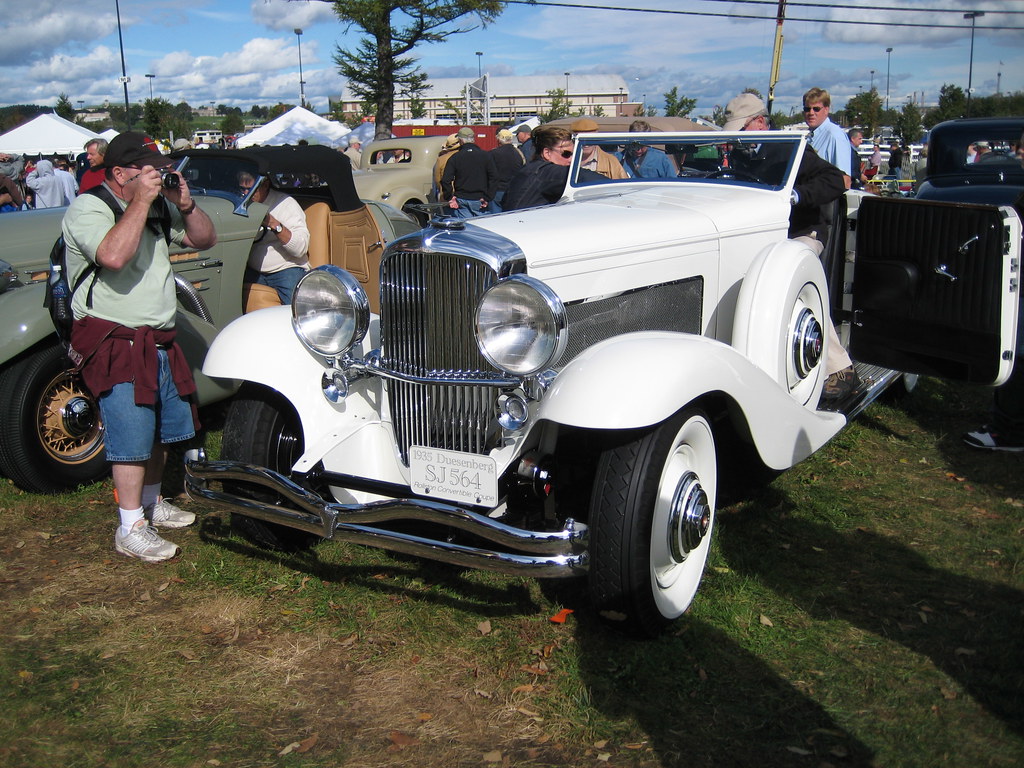
10. **Duesenberg: The Pinnacle of American Luxury**For a brief but incandescent period in the 1920s and 1930s, one name reigned supreme as the ultimate symbol of American luxury and unparalleled performance: Duesenberg. These were not merely cars; they were rolling masterpieces, meticulously crafted and breathtakingly powerful, representing the absolute zenith of automotive engineering and prestige in the United States. To own a “Duesy” was to own a piece of automotive perfection, a statement of extraordinary taste and wealth.
Duesenberg pushed the boundaries of what was conceivable in automotive technology, leaving an indelible mark on the industry. The brand was among the first to introduce supercharged engines, delivering a thrilling burst of power that was revolutionary for its time and setting new benchmarks for speed. They also pioneered hydraulic brakes, significantly enhancing safety and control, proving that their commitment to excellence extended far beyond mere opulence, embracing true engineering prowess.
Despite their indisputable status as automotive royalty, even Duesenberg couldn’t escape the harsh realities of economic upheaval. The calamitous onset of the Great Depression delivered a devastating blow to the market for ultra-luxury vehicles. When combined with the extraordinarily high cost of producing these meticulously crafted automobiles – each one a bespoke work of art – the financial strain became simply unsustainable, making survival an impossible feat for even the most celebrated brand.
Tragically, the company was forced to close its doors in 1937, marking the end of an era for one of America’s most celebrated marques. Yet, the name “Duesy” has transcended its demise, remaining a revered byword for excellence, sophistication, and innovation in the world of classic cars. Duesenberg’s legacy endures as a poignant reminder of a time when American craftsmanship could rival, and often surpass, the finest luxury vehicles anywhere in the world.
Read more about: I Miss These: 15 Iconic American Car Brands That Vanished From Our Roads
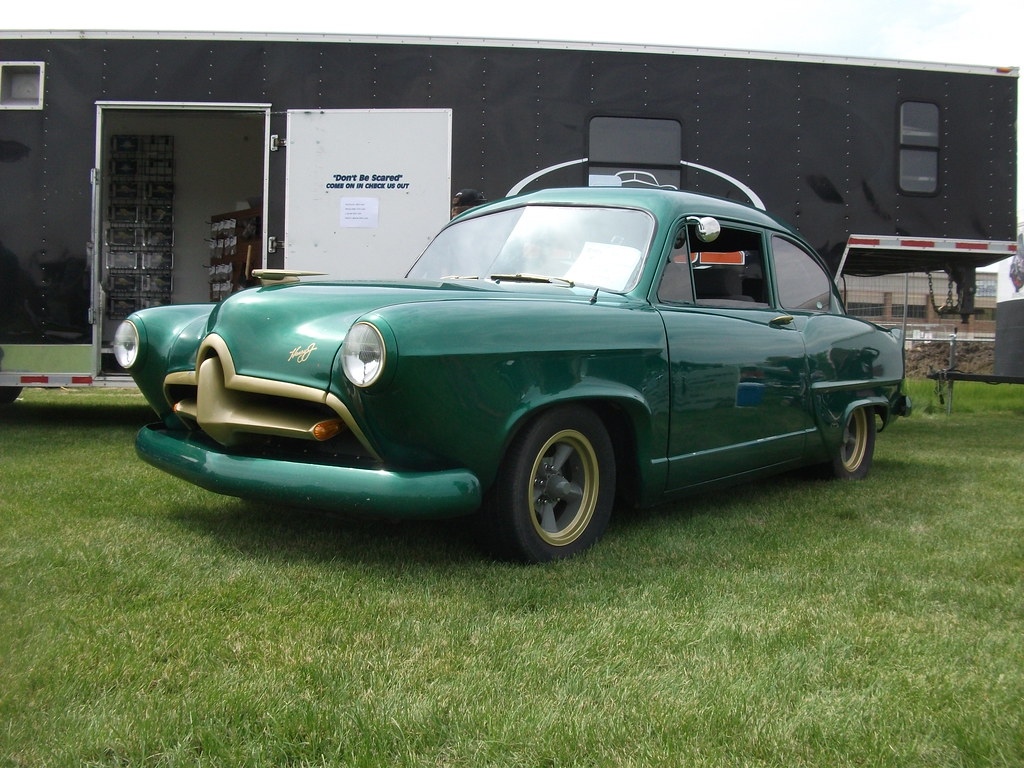
11. **Kaiser-Frazer: Postwar Promise and Unusual Designs**As America emerged from the shadow of World War II, a new wave of optimism and industrial ambition swept the nation. It was in this dynamic landscape that Kaiser-Frazer arose, aiming to meet the surging, pent-up demand for new vehicles from a public eager to hit the open road again. Formed by industrialist Henry J. Kaiser and automotive executive Joseph W. Frazer, the company dared to dream big in a fiercely competitive market.
Kaiser-Frazer quickly made its presence known with a series of distinctive and often unconventional vehicles. They rolled out affordable and accessible models like the compact Henry J, designed to be an economical choice for the everyday driver. But it was perhaps the eye-catching Kaiser Darrin sports car that truly showcased their adventurous spirit, boasting groundbreaking fiberglass construction and, most remarkably, innovative sliding doors that truly turned heads and captured the imagination of a style-conscious public.
Yet, even with its bold designs and a clever strategy to tap into postwar demand, Kaiser-Frazer faced an uphill battle. The automotive landscape was dominated by well-established rivals like the Big Three, who possessed vast resources and decades of experience. Kaiser-Frazer, as a newer entity, struggled to compete against such entrenched giants, grappling with limited capital and the immense costs associated with research, development, and marketing.
Despite their adventurous spirit and willingness to push design boundaries, these challenges proved too great. Production eventually ceased in the mid-1950s, bringing an end to Kaiser-Frazer’s ambitious foray into the automotive world. Nevertheless, the brand’s unique designs and pioneering construction methods are still admired by collectors and historians today, standing as a testament to a fascinating, if short-lived, chapter of American automotive innovation.
Read more about: I Miss These: 15 Iconic American Car Brands That Vanished From Our Roads
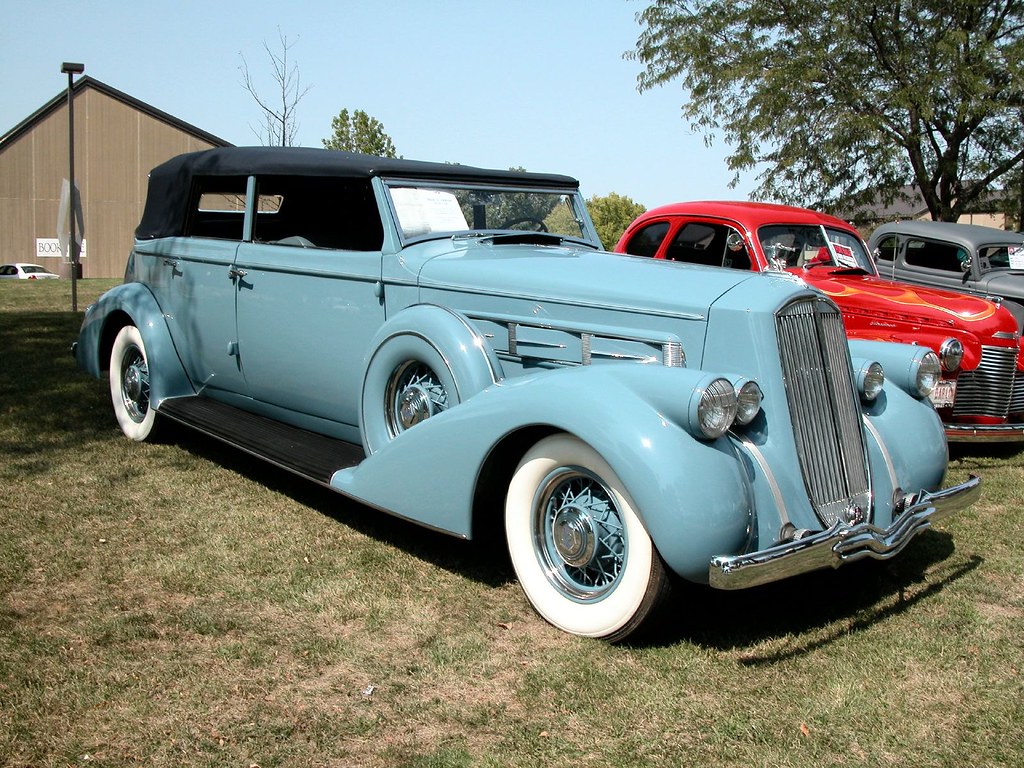
12. **Pierce-Arrow: The Aristocrat’s Choice**Stepping back to the early 20th century, one name epitomized American luxury and advanced engineering more than almost any other: Pierce-Arrow. For the discerning elite of America, a Pierce-Arrow wasn’t just transportation; it was a symbol of unparalleled status, meticulous craftsmanship, and forward-thinking design. The brand catered exclusively to those who demanded the absolute best, solidifying its reputation as “the aristocrat’s choice.”
Pierce-Arrow was a true innovator, consistently introducing features that set it apart from its competitors and raised the bar for the entire luxury segment. Imagine a time when features like power brakes were a marvel, or when lightweight aluminum bodies were a cutting-edge engineering feat – these were the advancements Pierce-Arrow brought to the forefront, showcasing a relentless pursuit of both performance and refined comfort. Their vehicles were not just beautiful; they were technically superior.
However, even a brand with such a sterling reputation and an enviable position at the pinnacle of luxury couldn’t weather every storm. The devastating economic downturn of the 1930s, the Great Depression, had a profound and ultimately fatal impact on the market for ultra-expensive automobiles. With fewer individuals able to afford such lavish vehicles, the demand for Pierce-Arrow’s exquisite creations dwindled dramatically, placing immense financial strain on the company.
Tragically, despite its glorious past and unyielding commitment to quality, Pierce-Arrow was forced to close its doors in 1938. While its commercial journey ended over eight decades ago, its vehicles are still revered by collectors and enthusiasts today, cherished for their timeless craftsmanship, elegant design, and pioneering spirit. Pierce-Arrow remains a poignant reminder of an era when American luxury stood tall, and its legacy continues to inspire awe and admiration.
Read more about: I Miss These: 15 Iconic American Car Brands That Vanished From Our Roads
As we put the brakes on this journey through automotive history, it’s clear that the road of progress is paved with both triumph and unexpected detours. The stories of these classic American car brands, from the bold innovators who dared to dream big to the everyday workhorses that served generations, remind us that the automotive landscape is in constant flux. While their names may no longer adorn new vehicles, their spirit of ingenuity, distinctive designs, and the sheer ambition they represented continue to echo through the corridors of time. They teach us that even the most iconic brands must adapt, evolve, and sometimes, gracefully step aside, leaving behind a rich tapestry of memories and lessons for the road ahead. Their silent departure paved the way for new contenders, but their legacies ensure they’ll never truly be forgotten.



